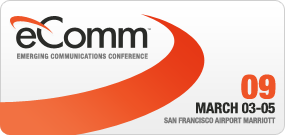Martin: FCC Concludes White Spaces Devices Can Share DTV Spectrum
Chairman says FCC will propose allowing mobile unlicensed devices to operate in white spaces between DTV channels.
By John Eggerton -- Broadcasting & Cable, 10/15/2008 1:44:00 PM
FCC Chairman Kevin Martin said Wednesday that the FCC will propose allowing mobile unlicensed devices to operate in the white spaces between DTV channels.
He says that the item is scheduled to be voted for in its Nov. 4 meeting.
Martin told reporters Wednesday that he was proposing allowing devices with both remote-sensing and geolocation capabilities--like laptops and so-called smart radios--to operate in the DTV band so long as they can tap into a database of broadcast TV channels in the area so they would not interfere with them.
He also said power
levels would be more limited for devices operating on channels adjacent to TV
channels than for other channels.
Martin said the FCC was proposing
allowing the devices to operate at 100 milliwatts, but only 40 milliwatts on
adjacent channels.
He said the FCC's white spaces report, which is being released today, concludes that the devices can be employed without interfering with broadcasts, and issue broadcasters argue with. The FCC has been testing prototype devices, with mixed results.
The caveat to the
chairman's announcement is that items that are announced for a vote do not
necessarily make it to the final meeting agenda, as was the case with the
low-power must-carry item for the Oct. 15 meeting.
David Donovan, who
heads the Association for Maximum Service Television, told B&C that
allowing 40 milliwatts of power on a first adjacent channel will "decimate
over-the-air TV." MSTV has been a leading voice in opposition to allowing the
unlicensed devices, arguing they could wreak havoc with DTV reception at the
same time that the government is trying to convert the entire country to
DTV.
Martin said he wants to utilize the spaces between broadcast
services for broadband, and that they can be used so long as the devices do not
interfere with broadcast channels.
Martin said the FCC testing was not about whether devices comply with existing rules and standards, but to instead use the tests to draw up those rules, saying that at times the devices worked, and at times didn't, but the testing allowed the FCC to go forward with drawing up rules.
Martin said the FCC will both put the report in the record and circulate an item to the commissioners establishing the rules for allowing white spaces devices.
Martin did not know when the unlicensed devices would become available if the item were adopted Nov. 4, but thought it would at least be a year for the devices with geolocation capability, and longer for those that need to be resubmitted.
